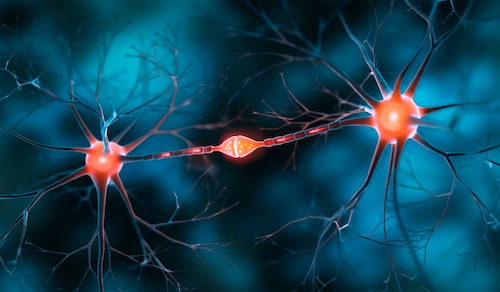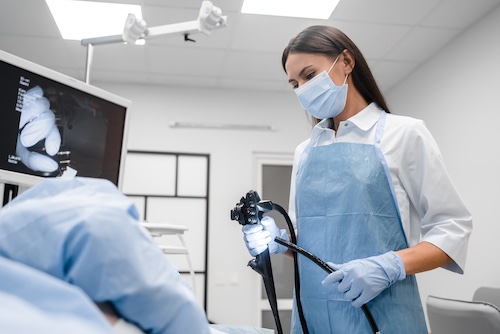Rhizotomy Treatments for Lasting Nerve Pain Relief
Chronic nerve pain can limit movement, disrupt sleep, and make daily life difficult. Rhizotomy treatments offer a minimally invasive way to stop nerves from sending constant pain signals to the brain.
For patients in Atlanta dealing with facet joint pain, SI joint pain, or other chronic pain conditions, an Atlanta endoscopic rhizotomy specialist can provide targeted treatment that often leads to immediate and long-term relief. This approach can reduce dependence on pain medication, restore mobility, and improve quality of life.
Understanding the Pain: Why Nerves Keep Sending Pain Signals
Chronic pain often starts with nerves that keep sending pain signals to the brain even when there is no immediate injury. Understanding how this happens helps explain why rhizotomy treatments can be effective.
How Nerve Fibers Carry Pain Signals
The body uses nerve fibers to send pain messages to the brain. When a nerve is irritated or damaged, it may send constant signals even without a clear cause. These repeated messages can lead to chronic pain conditions like chronic neck pain, back pain, and facet joint pain.
Facet Joints and Pain Transmission
The facet joints connect the bones of the spine. Wear, injury, or inflammation in these joints can irritate the medial branch nerve. This nerve is responsible for sending pain information from the facet joints to the brain. If it becomes overactive, patients may feel significant pain that does not improve with pain medication or physical therapy.
Nerve Roots and SI Joint Pain
The nerve roots that exit the spine can become compressed or irritated. This can cause pain in the lower back, legs, or hips. The sacroiliac joint (SI joint) is another source of nerve pain that may continue to send signals long after the original cause has healed.
Why Conservative Treatments Sometimes Fail
Conservative treatments such as rest, stretching, and anti-inflammatory drugs may reduce pain for a short time. However, if the affected nerve continues sending pain signals, the discomfort can return quickly. This is why many patients with facet joint syndrome or SI joint pain seek advanced options like radiofrequency rhizotomy or endoscopic rhizotomy for long-term relief.
Rhizotomy Treatments Explained
Rhizotomy treatments target specific nerves to stop them from sending ongoing pain signals. This procedure can bring lasting relief for patients with chronic nerve pain when other options have failed.
What is a Rhizotomy Procedure
A rhizotomy procedure uses heat, cold, or a chemical agent to disrupt nerve function. The goal is to prevent the nerve from carrying pain signals to the brain. Common methods include radiofrequency rhizotomy, percutaneous rhizotomy, and endoscopic rhizotomy.
How Radiofrequency Rhizotomy Works
Radiofrequency rhizotomy uses a small probe to deliver a controlled radiofrequency current to the affected nerve. This current heats the nerve tissue, stopping it from sending pain messages. It is a minimally invasive treatment often performed with local anesthesia.
Endoscopic Rhizotomy for Precision
Endoscopic rhizotomy allows the surgeon to see the nerve directly using a tiny camera. This improves accuracy and reduces damage to surrounding tissue. An Atlanta endoscopic rhizotomy specialist uses a tiny incision and specialized instruments to reach the nerve. Many patients experience immediate pain relief and recover within a few weeks.
When Rhizotomy is Recommended
This procedure is often suggested for patients with facet joint pain, facet joint syndrome, SI joint pain, or trigeminal neuralgia who do not improve with conservative treatments. It can also help patients reduce dependence on pain medication and return to normal activity.
Endoscopic Rhizotomy: Atlanta’s Minimally Invasive Edge
Endoscopic rhizotomy offers patients in Atlanta a precise and effective way to stop chronic nerve pain while avoiding open surgery. This advanced method targets the affected nerve directly for improved accuracy and faster recovery.
A Clear View of the Nerve
During an endoscopic rhizotomy, the surgeon uses a small camera to see the nerve fibers and surrounding tissue in real time. This clear view allows precise placement of instruments. It also reduces the risk of injury to healthy tissue compared to traditional surgical methods.
Small Incision and Local Anesthesia
The procedure begins with a tiny incision at the surgical site. In many cases, only local anesthesia is needed. The endoscope and specialized tools reach the nerve without cutting through large amounts of tissue. Patients typically spend a short time in the recovery room before returning home.
Targeted Nerve Ablation
The surgeon uses radiofrequency current or other energy to perform nerve ablation. This disrupts the nerve’s ability to send pain signals to the brain. The targeted approach helps preserve normal function while providing long-term pain relief for conditions like facet joint syndrome or SI joint pain.
Recovery and Results
Most patients notice immediate pain relief or improvement within days. Full recovery often takes only a few weeks. Many people report a significant improvement in mobility, reduced need for pain medication, and better quality of life after treatment from an Atlanta endoscopic rhizotomy specialist.
Step-by-Step: What to Expect from a Rhizotomy Procedure
A rhizotomy procedure is straightforward and usually completed in one visit. Knowing each step can help patients feel more comfortable and prepared.
Pre-Procedure Evaluation
Before the procedure, the specialist confirms the source of pain through imaging and diagnostic nerve blocks. This ensures the affected nerve is the correct target for treatment. Patients are also evaluated to confirm that conservative treatments have not provided lasting relief.
Preparation on the Day of Treatment
On the day of the procedure, the patient changes into a surgical gown and is positioned for easy access to the treatment area. The skin at the surgical site is cleaned and numbed with local anesthesia. Some patients may receive mild sedation for comfort.
Locating the Nerve
The surgeon uses imaging guidance to locate the nerve fibers that are sending pain signals. This step is critical for precision and ensures the treatment is directed at the right nerve.
Disrupting Pain Signals
A small probe or endoscope is inserted through a tiny incision to reach the target nerve. Radiofrequency current or another method is used to perform nerve ablation, stopping the nerve from sending pain signals to the brain.
Recovery After the Procedure
Patients usually spend a short time in the recovery room before going home the same day. Mild soreness at the treatment site is common. Many patients feel immediate pain relief, while others notice steady improvement over the next few weeks.
Ready to Find Relief with Rhizotomy Treatments
Our team at Georgia Spine & Orthopaedics offers expert evaluation and care led by skilled spine surgeons and pain management specialists in Atlanta. We guide each step from diagnosis through recovery.
Contact us at 678-929-4494 to schedule an appointment with us today!








